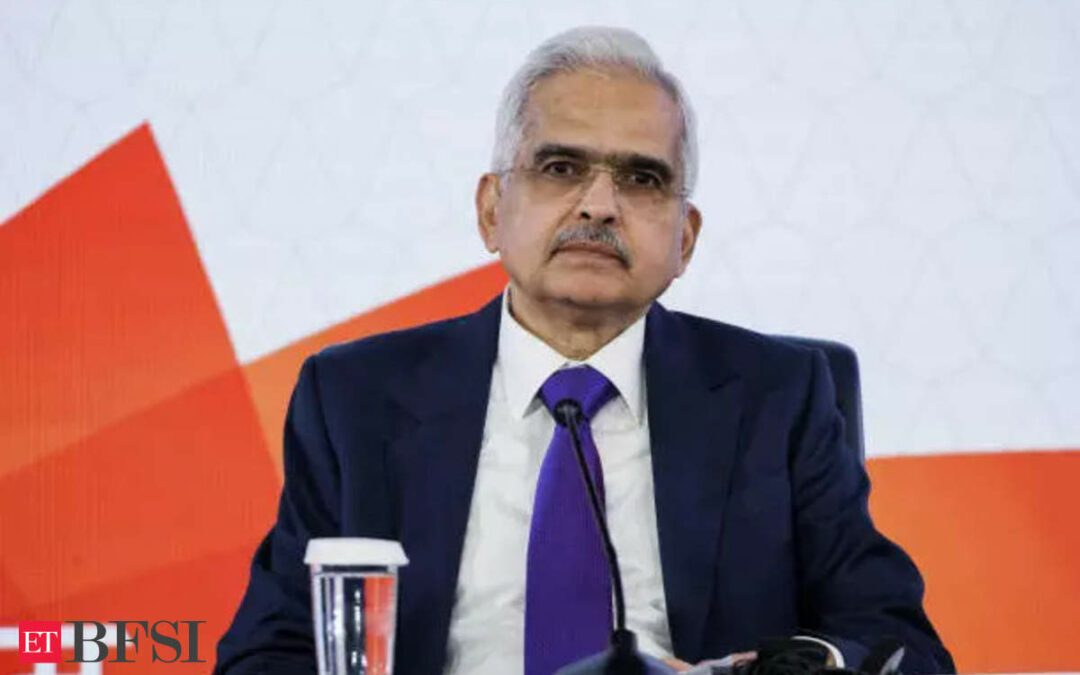The Reserve Bank of India (RBI) Thursday held interest rates and monetary stance steady for the sixth straight monetary review meeting amid geopolitical tensions and an uncertain food prices trajectory, pouring cold water on expectations of an early easing in borrowing costs.
The central bank forecast the economy will repeat its performance next fiscal, expanding at 7%. It said inflation will remain above the target at 4.5%, delaying the easing of monetary conditions as it aims to align the reading on the price gauge with the target of 4% on a durable basis.
But the cracks in the Monetary Policy Committee began to widen on matters such as interest rates and the monetary stance, with both decisions voted 5 to 1 as the panel retained its `focus on the withdrawal of accommodation.’ External member J.R. Varma voted for a reduction in interest rates by 25 basis points. A basis point is a hundredth of a percentage point.
“The ongoing wars and conflicts and the emergence of new flashpoints in different parts of the world, with disruptions in the Red Sea being the latest in the series, impart uncertainty to the global macroeconomic outlook,’’ said Governor Shaktikanta Das. Monetary policy must continue to be actively disinflationary to align inflation to the target of 4% on a durable basis.
The Repo rate, the rate at which the central bank lends to banks will remain at 6.5% and so will be the other rates. Financial markets were volatile as it sought to decipher the tone of the Governor, with experts believing that odds have now lengthened on rate easing.
The Sensex declined 0.6 per cent to 71,745.91, and the rupee was steady at 82.96 per US dollar. Yield on the benchmark bond was flat at 7.07%. Bond prices and yields move inversely. A basis point is 0.01 percentage point.
“The have maintained a status quo, but the current monetary stance focusing on withdrawal of accommodation has become irrelevant because it neither describes the prevalent monetary conditions nor does it give guidance about the future,’ said A. Prasanna, Head of Research at ICICI Securities Primary Dealership Ltd.
The RBI forecast the economy would expand at 7% in the next fiscal year, and inflation at 4.5% under normal monsoon conditions that could lead to abundant food production. An ET poll of 12 market participants unanimously predicted that the MPC would keep the repo rate unchanged at 6.50%, while two expected a change in monetary stance.
A Galloping Economy
India’s economy is on a roll, expanding at the fastest pace among major markets. Automobile sales are setting records, real estate companies are selling more luxury apartments and companies are lining up capital investments not seen in years, partly due to government incentives such as the Production Linked Incentive scheme.
“Household consumption is expected to improve, while prospects of fixed investment remain bright owing to upturn in the private capex cycle, improved business sentiments, healthy balance sheets of banks and corporates,’’ said the MPC statement. “Improving outlook for global trade and rising integration in global supply chain will support net external demand.’’
Although inflation has receded from its peak, central bankers are unwilling to declare a victory over it as they are keen on a durable control on prices.
The US Federal Reserve Chairman Jerome Powell, who had indicated interest rate cuts this year, punctured investor hopes when he said that he would push expectations of first interest rate cut beyond March this year.
The central bank, which has been improving the transparency for customers in their dealing with the banks, also widened the Key Facts Statement (KFS) containing granular details of the cost of borrowing to broader retail loans and lending to the Medium Small and Micro Enterprises.
Separately, the RBI’s stance on liquidity brings relief to the market that has been confounded by the prevailing realities where the overnight rates were higher on average than the policy rates.
Liquidity Challenges
“So far as liquidity conditions are concerned, these are being driven by exogenous factors, which are likely to correct in the foreseeable future, aided by our market operations,’’ said Das.
The RBI had injected large amounts of liquidity into the banking system during 2020-21 to keep borrowing costs low and boost demand amid the Covid-19 crisis. In April 2022, the MPC first moved towards withdrawal of the accommodative stance. Over the past six months, as excess funds progressively dried up, the banking system has witnessed deficit liquidity conditions, with banks’ borrowing from the RBI surpassing past Rs 3 lakh crore in January, a multi-year high.
Large and repetitive food price shocks are interrupting the pace of disinflation that is led by the moderation of core inflation,’’ said the MPC. “Geopolitical events and their impact on supply chains, and volatility in international financial markets and commodity prices are key sources of upside risks to inflation.’’










